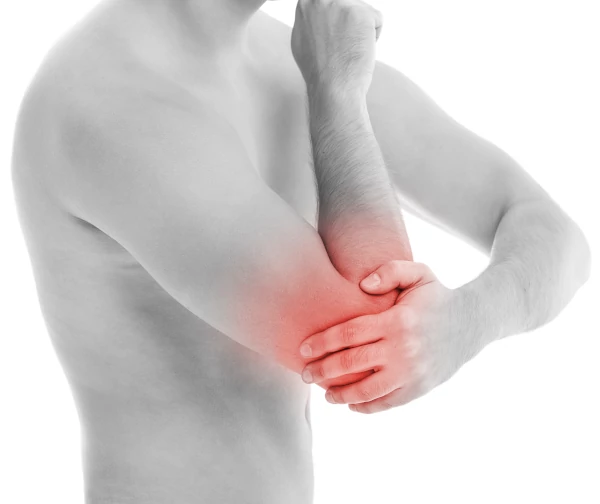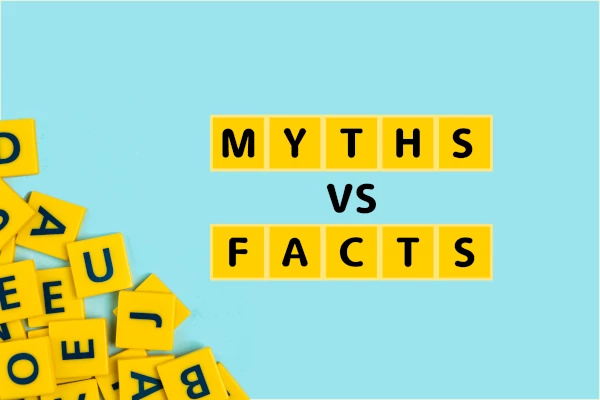Tennis elbow is a sneaky little devil that can creep up on you when you least expect it. You might think you’re invincible, but even the most seasoned athletes can fall victim to this troublesome condition. Tennis elbow is a type of tendinitis that causes pain and tenderness in the outer part of the elbow and can be exhausting for athletes and non-athletes alike.

Causes for Tennis Elbow
Well, it’s not just limited to tennis players. In fact, anyone who engages in repetitive arm movements, like painters or plumbers, is at risk. Even typing on a keyboard for extended periods can cause it.
Fortunately, there are ways to treat tennis elbow and reduce your pain.
How to treat?
- Rest and Ice
One of the most effective ways to reduce tennis elbow pain is to rest the affected arm and apply ice to the elbow. This can help reduce inflammation and relieve discomfort. To do this, take a break from playing tennis and other activities that may aggravate your condition. Apply an ice pack or a bag of frozen peas to the affected area for 15-20 minutes several times daily. - Ergonomic Adjustments
Making ergonomic adjustments to your tennis racquet and other equipment can also help reduce tennis elbow pain. Consider changing the grip size of your racquet or switching to a different type of string to reduce the amount of shock your arm experiences during play. - Analgesics and NSAIDs
These over-the-counter pain relievers can work wonders when it comes to reducing inflammation and alleviating pain. - Physiotherapy
In some cases, physiotherapy can be an effective treatment for tennis elbow. A physiotherapist can work with you to develop a treatment plan that includes exercises to improve flexibility and strength in your forearm muscles and manual therapy techniques to reduce pain and reduce inflammation.
Stretching exercises can help improve flexibility. Strengthening exercises can help to improve the strength of the muscles in your forearm. This will help to reduce tennis elbow pain.
Dry needling therapy is a potential treatment option for tennis elbow. The therapy involves inserting thin needles directly into the affected muscle, trigger points, or fascia, with the aim of releasing tension and promoting healing. It is a non-invasive and safe treatment option that typically involves several sessions. However, it is important to note that dry needling therapy should only be performed by a licensed healthcare professional trained in the technique.
Shock wave therapy is a promising treatment option for tennis elbow. The therapy involves using high-energy sound waves to promote healing and reduce inflammation in the affected area. During the procedure, a handheld device delivers these sound waves directly to the elbow. It is a non-invasive and safe treatment option that typically involves several sessions spaced out over a few weeks. For those seeking an alternative to surgery or medication, shock wave therapy may be worth considering.
Kinesio taping is a potential treatment option for tennis elbow. The therapy involves applying a specialized tape to the affected area, with the aim of reducing pain and promoting healing. The tape is designed to provide support while still allowing for a full range of motion. It is a non-invasive and safe treatment option that can be used in combination with other therapies. However, it is important to note that kinesio taping should only be applied by a trained healthcare professional. It may not be suitable for everyone, and proper consultation is important to apply kinesio taping. - PRP injections
PRP therapy is used to heal tennis elbow pain. This cutting-edge treatment involves injecting platelet-rich plasma directly into the affected area to help promote healing and reduce inflammation. It’s a non-surgical option, so you can get back to your favorite activities in no time. - Steroid injections
This treatment involves injecting steroids directly into the affected area to reduce inflammation and alleviate pain. - Surgery
In severe cases, surgery can be a game-changer. Your surgeon will make a small incision and remove the damaged tissue, allowing your elbow to heal properly.
It is important to consult with a medical professional to determine the appropriate course of treatment for your individual case.
The bottom line is this: if you’re using your arms a lot, you need to be aware of the warning signs. Don’t let tennis elbow knock you out of the game – be proactive and take care of your body.
Tennis elbow pain can be a frustrating and painful condition, but it doesn’t have to keep you from enjoying your favorite sport. By following these expert tips and tricks, you can reduce your pain and get back to playing tennis and other activities you love. If your pain persists, consider seeking the help of a physiotherapist to develop a personalized treatment plan. With the right approach, you can say goodbye to tennis elbow pain for good.
What is Tennis Elbow?
Tennis Elbow, medically known as lateral epicondylitis, is a condition where the outer part of the elbow becomes painful and tender. It is caused by the overuse or repetitive strain of the forearm muscles and tendons that attach to the lateral epicondyle of the humerus bone in the elbow.
What are the symptoms of Tennis Elbow?
The symptoms of the Tennis Elbow include pain and tenderness on the outer part of the elbow, especially when gripping, twisting, or lifting objects. The pain may also radiate down to the forearm and wrist. There may be a weakness in the affected arm and difficulty in performing daily activities.
Who is at risk of developing Tennis Elbow?
People who participate in repetitive activities such as sports that involve gripping and twisting motions, manual labor jobs, and musicians who play instruments that require repetitive finger movements are at a higher risk of developing Tennis Elbow. Additionally, individuals with poor physical conditioning or those who use improper equipment may also be at risk.
How is Tennis Elbow diagnosed?
The diagnosis of Tennis Elbow is made by a healthcare professional who will take a medical history and perform a physical examination of the affected area. Imaging studies such as X-rays, MRI or ultrasound may be ordered to rule out other conditions.
What are the treatment options for Tennis Elbow?
The treatment for Tennis Elbow may include a combination of rest, ice, compression, and elevation (RICE), physical therapy, nonsteroidal anti-inflammatory drugs (NSAIDs), and corticosteroid injections. In severe cases, surgery may be recommended. It is important to consult with a healthcare professional for an accurate diagnosis and appropriate treatment plan.
Featured image by stockking on Freepik



